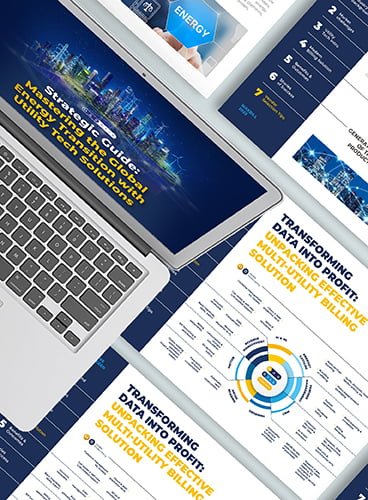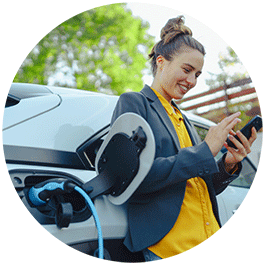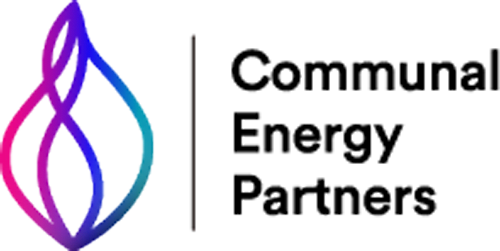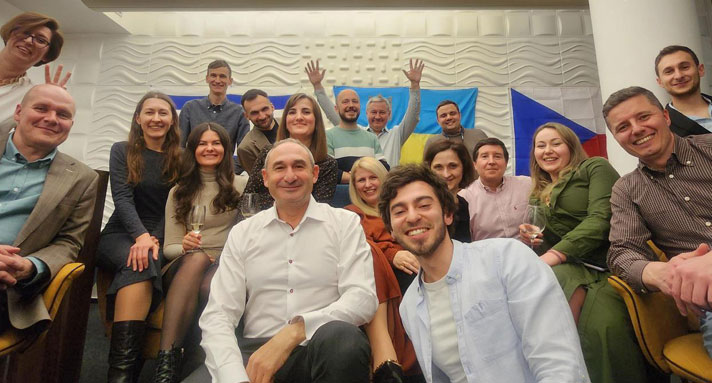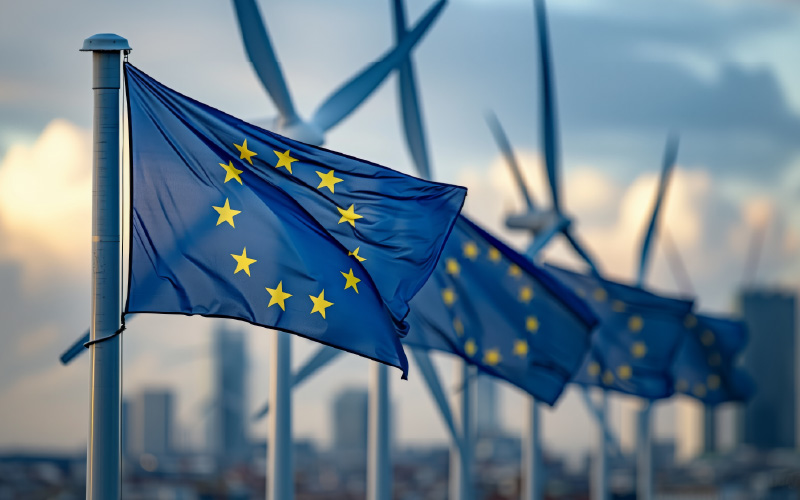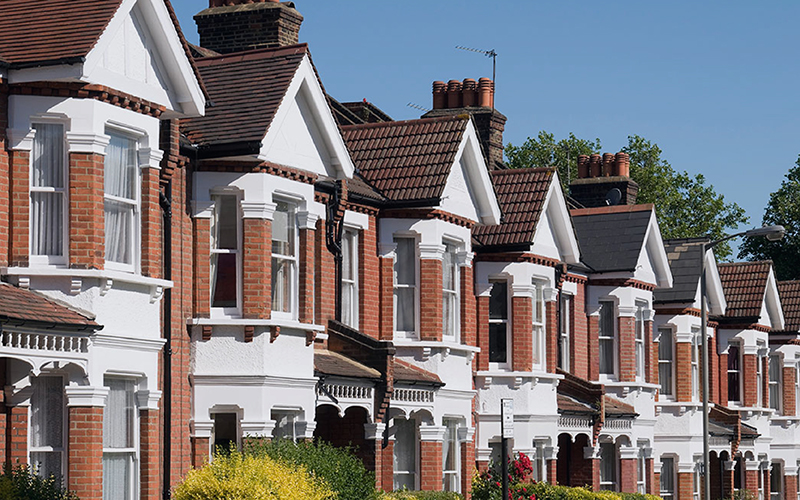The famous quote belongs to Churchill, who was about to set a new trajectory of development for the United Nations after WWII. This also means that dramatic change invariably reveals new insight and unlocks opportunities for growth.
In 2022, the world is recovering from the pandemic, and Russia’s invasion of Ukraine has added new challenges, especially to the energy sector. Not only did energy prices rise, but the conflict also had an impact on Europe’s energy transition commitments. High oil and gas prices increased the likelihood of gas-to-coal switching for electricity generation.
This year, Enlit Europe was all about finding solutions to existing issues and identifying trends that will shape the industry in the near future. Let’s take a look at them.
The power of four Ds
Decentralisation, democratisation, decarbonization, and digitalisation were four throughlines of the Event’s business stories. Today, energy resources are becoming decentralised necessitating adaptable stabilising solutions. Consumers are also given more freedom to choose their energy sources, which has an impact on the amount of CO2 emissions to the environment.
To illustrate, BAM Construct lowers the carbon footprint of buildings by maximising the consumption of renewable-produced electricity (own and external local sources), incl. the use of batteries.
Last but not least, the digital transformation of systems involved (e.g., DSOs) gets institutions ready to implement solutions to tackle current challenges, such as congestion, cost-efficiency, scale issues, etc.
The grid of the future becomes real

Smart grid solutions will enable intelligent coordination of flexible units to prevent anticipated congestion – one of the critical issues in the sector nowadays. They will provide connectivity among all participants, automatic control in the event of congestion, and transparency through grid measurements, smart metering, and forecasts.
“No question the grid becomes the core of energy in 2030”, Schneider Electric. According to the company’s representative, by 2030, it will have to manage a 65% share of renewable electricity generation, from 21% to 30% direct electrification, and 250% deployment of energy efficiency measures.
Optimised and stable microgrids are critical for energy efficiency. Microgrids support macrogrids by tackling power fluctuations from local renewable energy sources and offer extra services to bulk power networks and sensitive loads.
EU is massively renewing DSOs to make them more reliable and secure
The digitalisation of distributed system operators is definitely on point since digitalisation on the distribution side is enabling flexibility. Today, many lack the technology to handle congestion and need infrastructure investments and proper team training.
DSos are supposed to become agile and understand consumers like the Internet. European leaders seek the expansion of grid capacity in terms of RES and loads (e-mobility, heat pumps, etc.) and the use of flexibility. Digitalization is expected to be end-to-end from control to field, not just IoT.
Utilities go from traditional to joint ventures
Utilities cooperate with renewables, developers of smart buildings, and energy customers, coming up with new business models. They expand the ecosystem of partners to drive more value and rethink the architecture to a sustainable economy.
Now, utilities become more focused on smart infrastructure for customers, which includes sales of electricity and gas, billing services, installation of critical infrastructure, such as broadband, charging, and urban infrastructure. In the meantime, security of supply, resilience, and affordability remain priorities.
The concept of “locale’ runs energy efficiency

DER adoption is accelerating, creating new opportunities for grid operators. DER management in Local Energy Markets relieves the burden from the distribution grid and helps dispatch generation locally.
The key to local energy efficiency is matching the heat pump, EV, batteries, PVCs. The fluctuation of renewables requires batteries that are supposed to stabilize frequency and demand peak shaving.
Inspiring urban approaches is how energy communities were introduced. They unite households and encourage collective self-consumption, storage, the optimization of energy and economic flows, electricity-sharing, and mobile app for residents with data about their energy consumption. E.g., in Valencia, Spain, the Council has set up an Energy Office and made public roofs available to energy communities for PV installations.
Residential flexibility markets prevail now
In general, flexibility markets are set to be worth $10 billion by 2029. Residential ones are more technology-capable and allow optimising self-consumption on place and monetising it more efficiently. Flexibility drives grid optimization (the potential aspect of smart alleviation of grid congestion) and active prosumer engagement.
The term encompasses virtual power plants, energy storage, DERMs, EV smart charging, and energy communities. The concept behind it suggests virtually connected consumers and prosumers for energy efficiency, operation of energy communities and energy utility management and services.
Yet, working with the residential sector, on the other hand, necessitates clever software to keep costs low and flexibility high.
P2P trading encourages solutions to exchange energy within the community
Anyone with solar panels can trade electricity with their peers; retailer brands can buy excess energy from their clients in exchange for products or vouchers; prosumers and consumers can establish their preferred buyers and sellers, even set prices; customers can supply electricity to friends, neighbors, community groups, etc. Commercial customers can share their solar between their solars located within the same grid.
For example, Agem (Auxiliar General de Electromedicina) supports the local energy transition and executes cost savings by becoming a supplier and sourcing energy from renewable sources in the areas for the consumption of public buildings.
Policymakers need to be more supportive
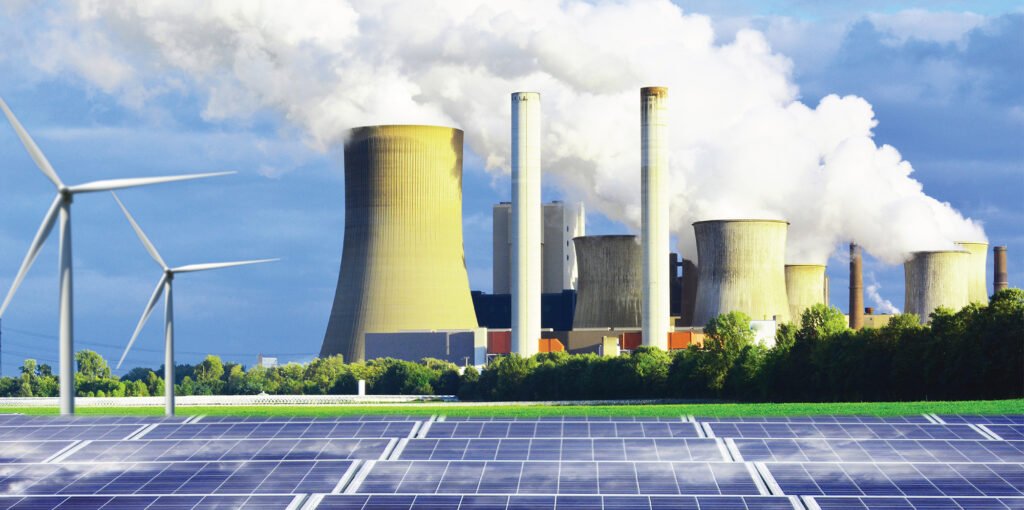
“Policy making needs to recognise the contribution of cogeneration [in the whole value chain] to providing energy efficiency”, said Hans Korteweg from COGEN Europe. Cogeneration (joint production of electricity and heat) is only one example of a venture that needs strong regulatory incentives.
Regulatory frameworks need to cover distributed flexibility, different business models to fit the local and national frames, rules defining DSOs and RECs cooperation and securing the equal and non-discriminatory treatment of consumers, and much more.
The Data Act: a Bible for data sharing
The European Commission proposed “harmonised rules on fair access to and the use of data” and set out to make the EU a leader in the data-driven economy. The transformation of the energy sector needed for Europe’s climate goals depends heavily on data and digital technologies. Data availability supports increased energy efficiency, the integration of renewable energy sources, grid resilience, and innovative businesses like smart mobility.
However, to adapt to all circumstances, provide a fair and seamless data flow, and ensure legal certainty and visibility to all ecosystem actors, the scope of obligations must be carefully assessed.
Bottom line
Getting back to the famous quote of Churchill, the energy crisis is around, which makes people redefine energy security, market participants’ roles, and business models. At the end of the day, it brings about innovations, solutions, and breakthroughs that make this world a better place to live.
With the four Ds in mind, Europe is moving toward a secure, resilient, and affordable energy sector. Flexibility markets, P2P trading, modern DSOs, DER adoption, smart grids, etc. will be driving forces for the industry for the next five years.
